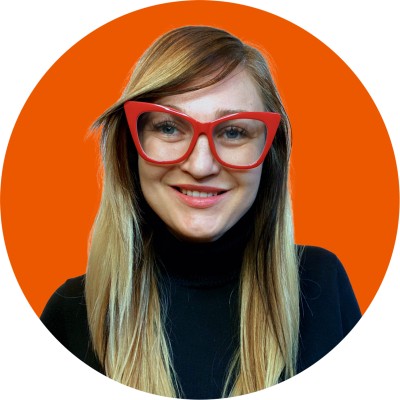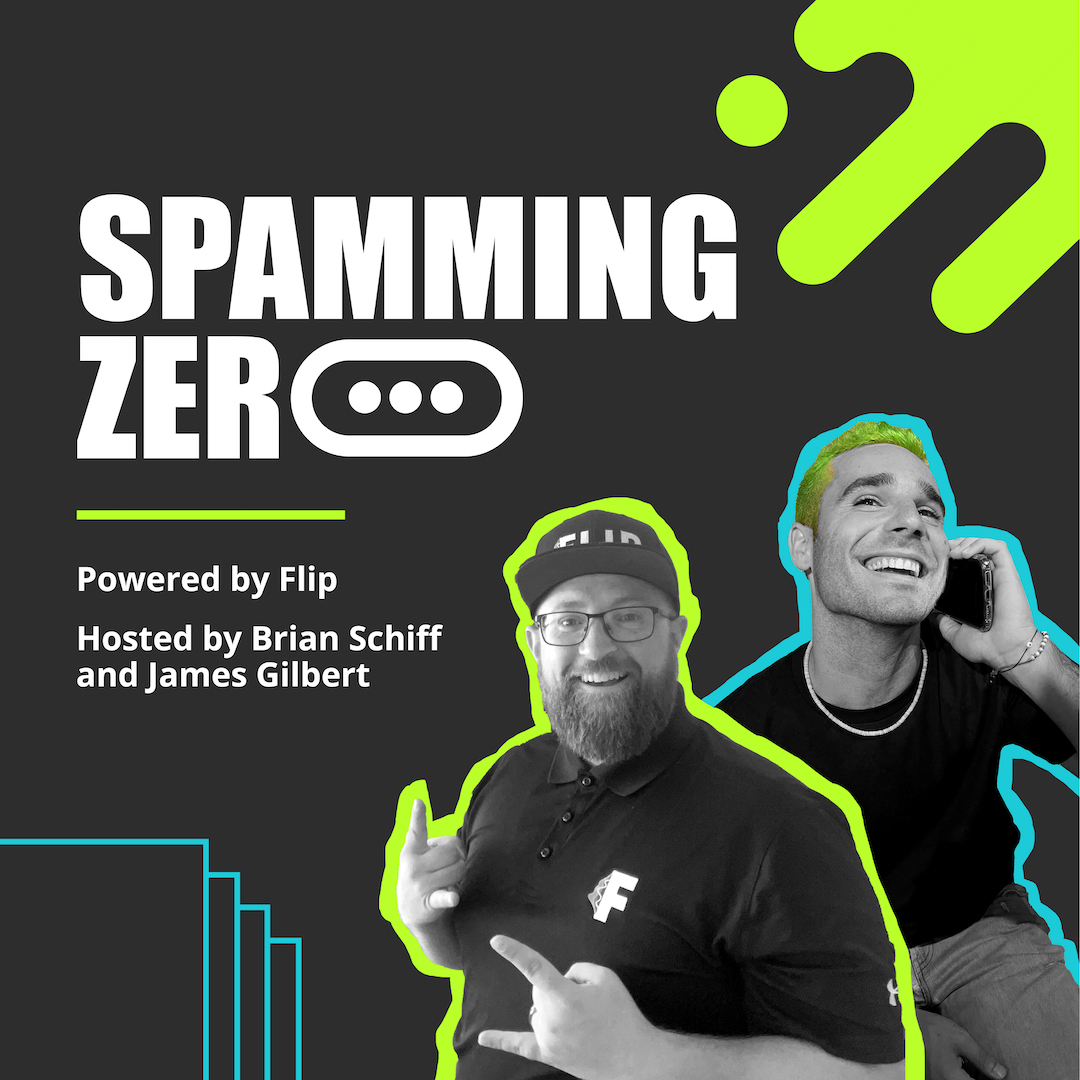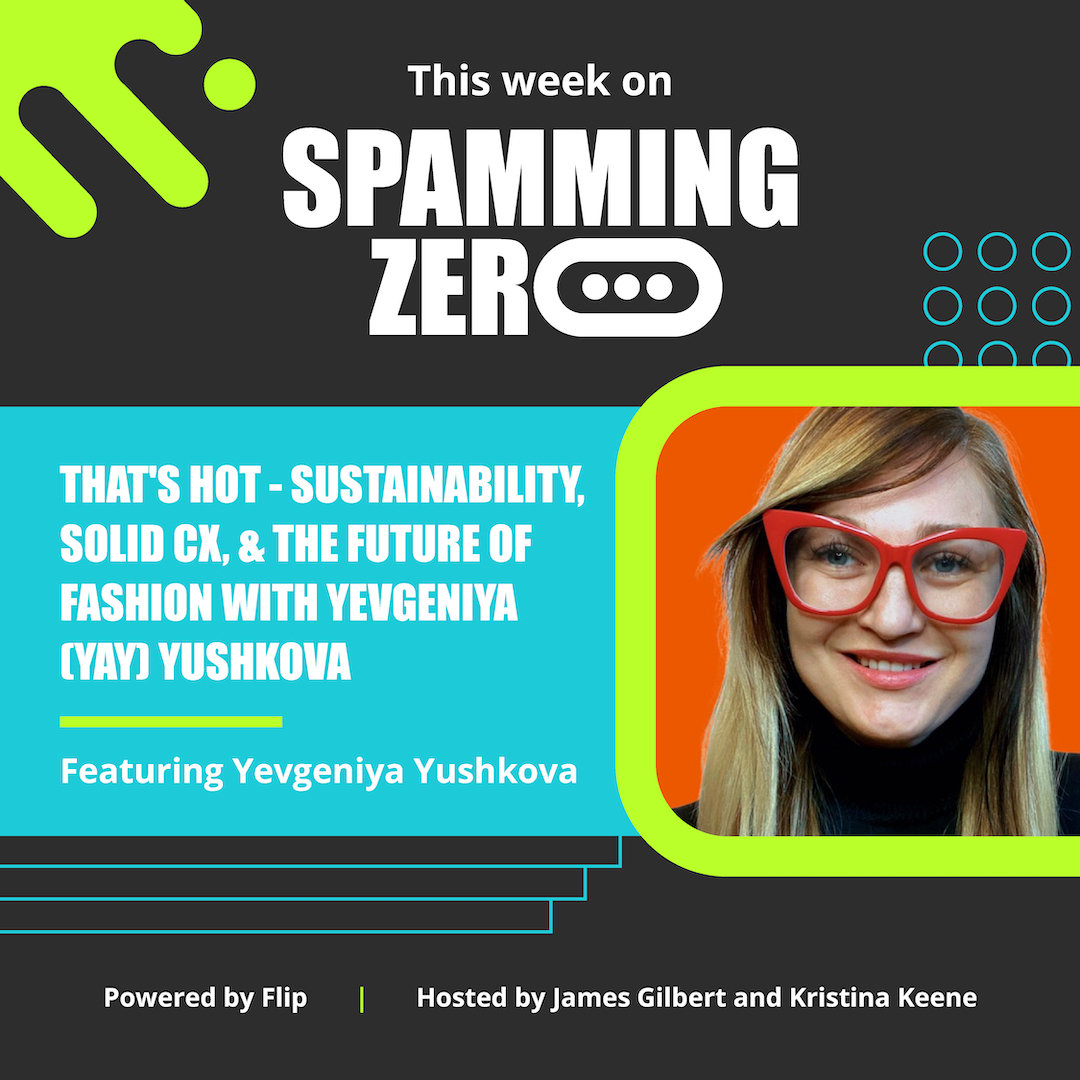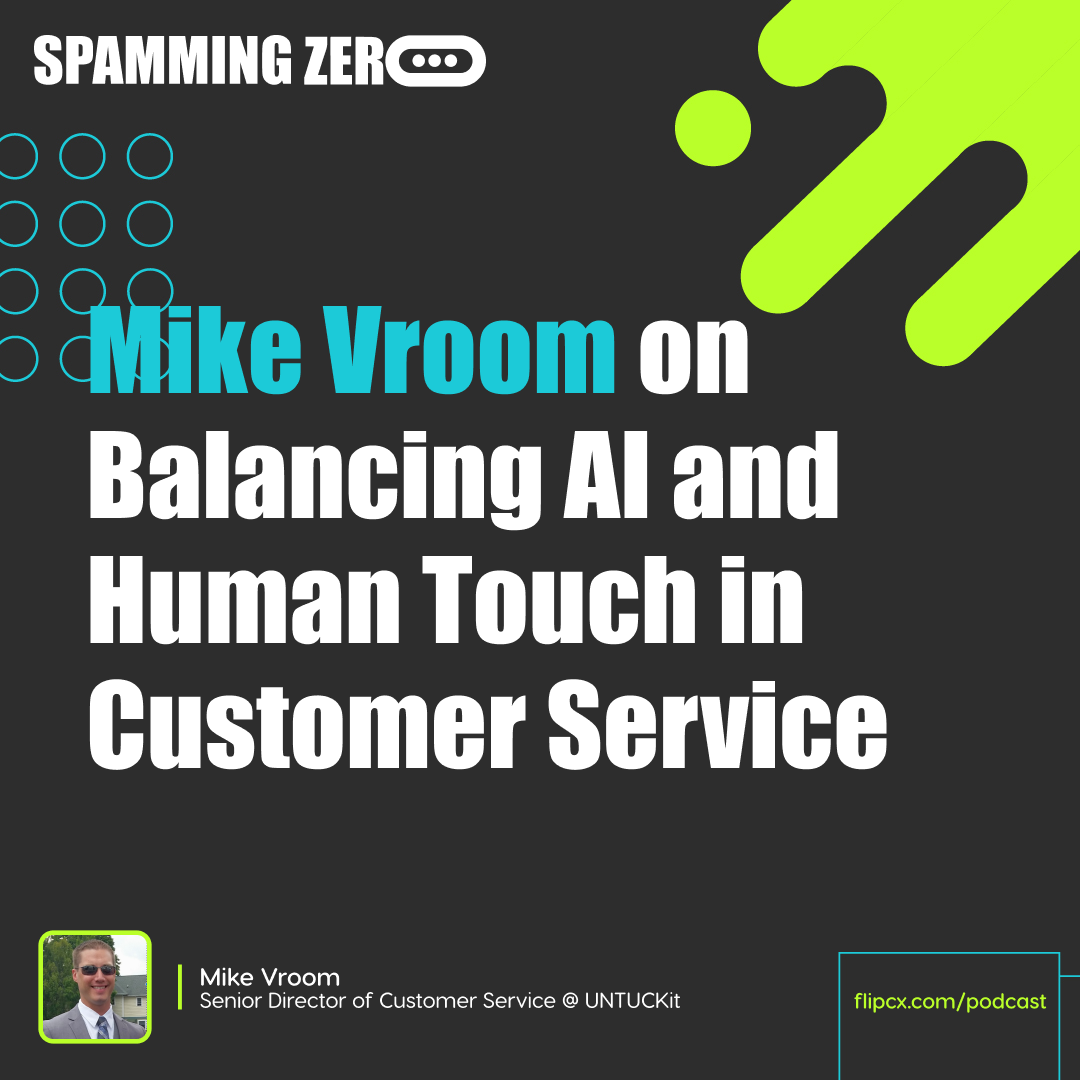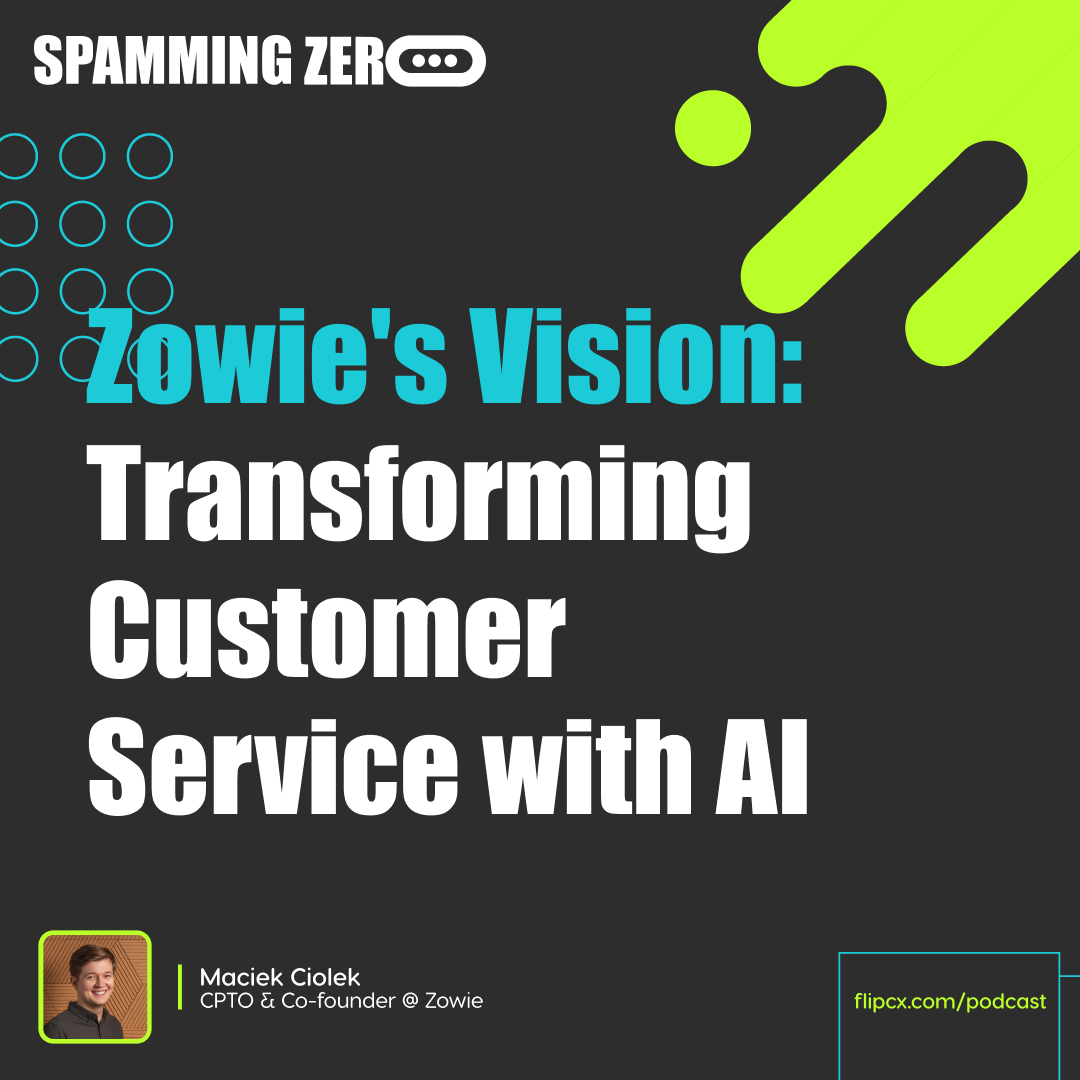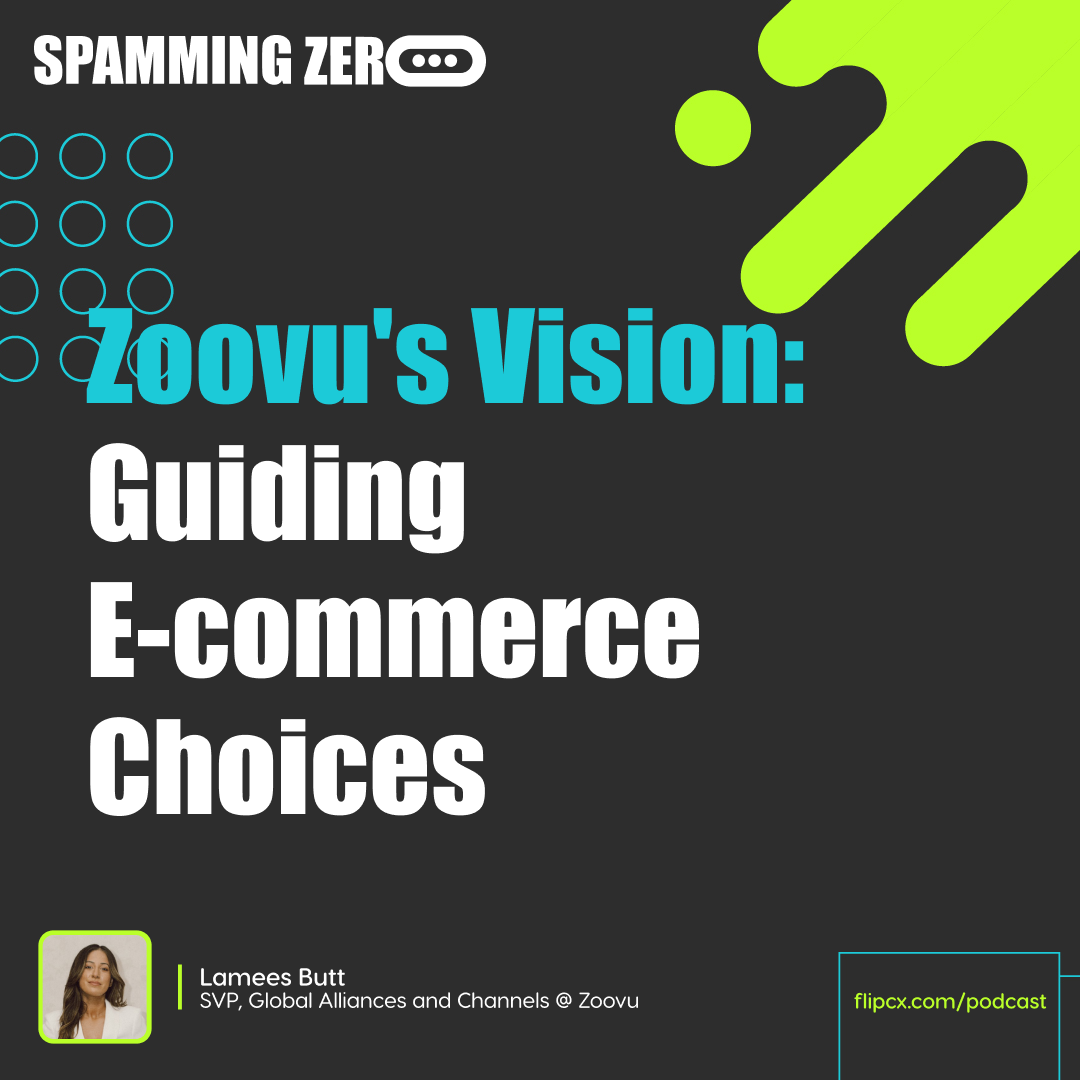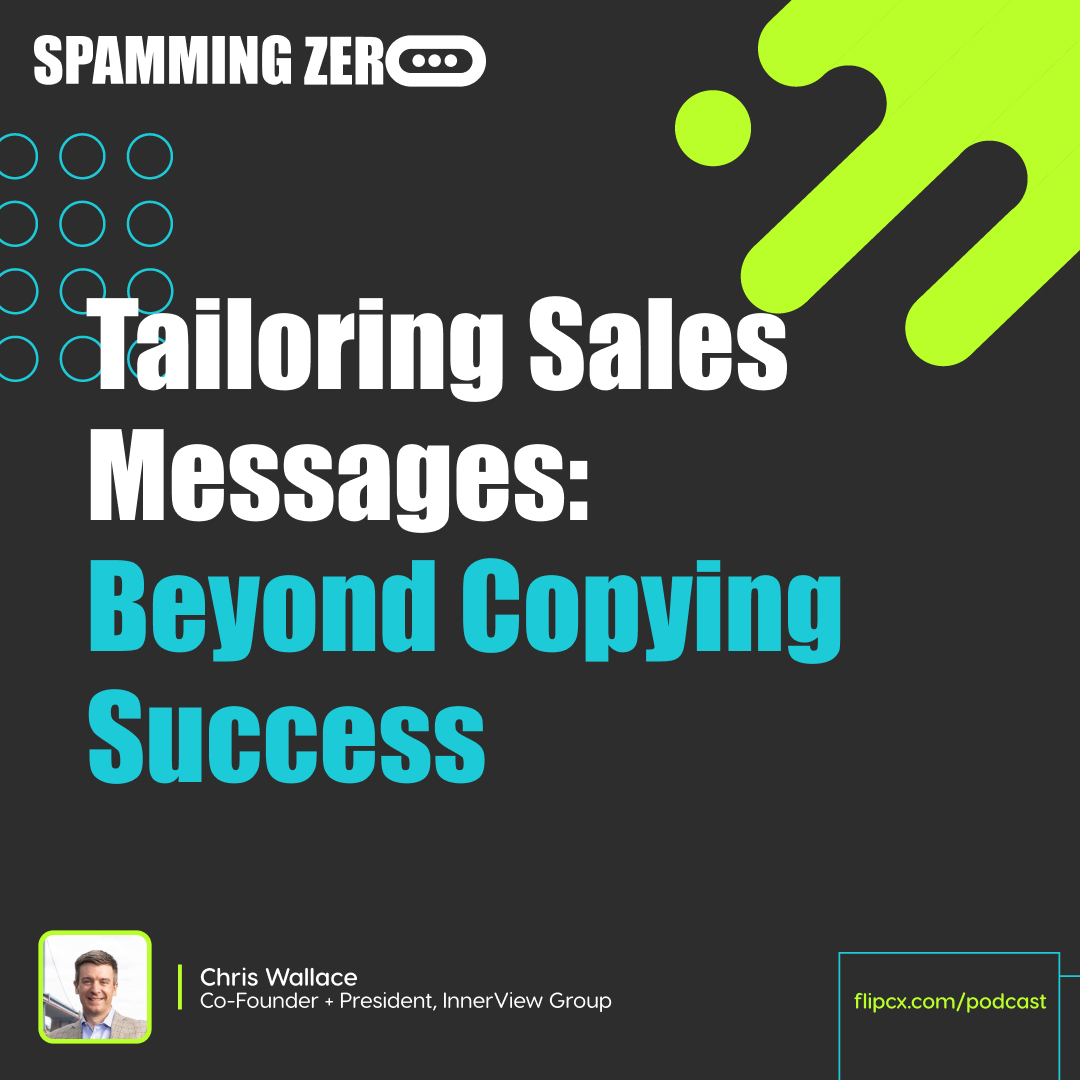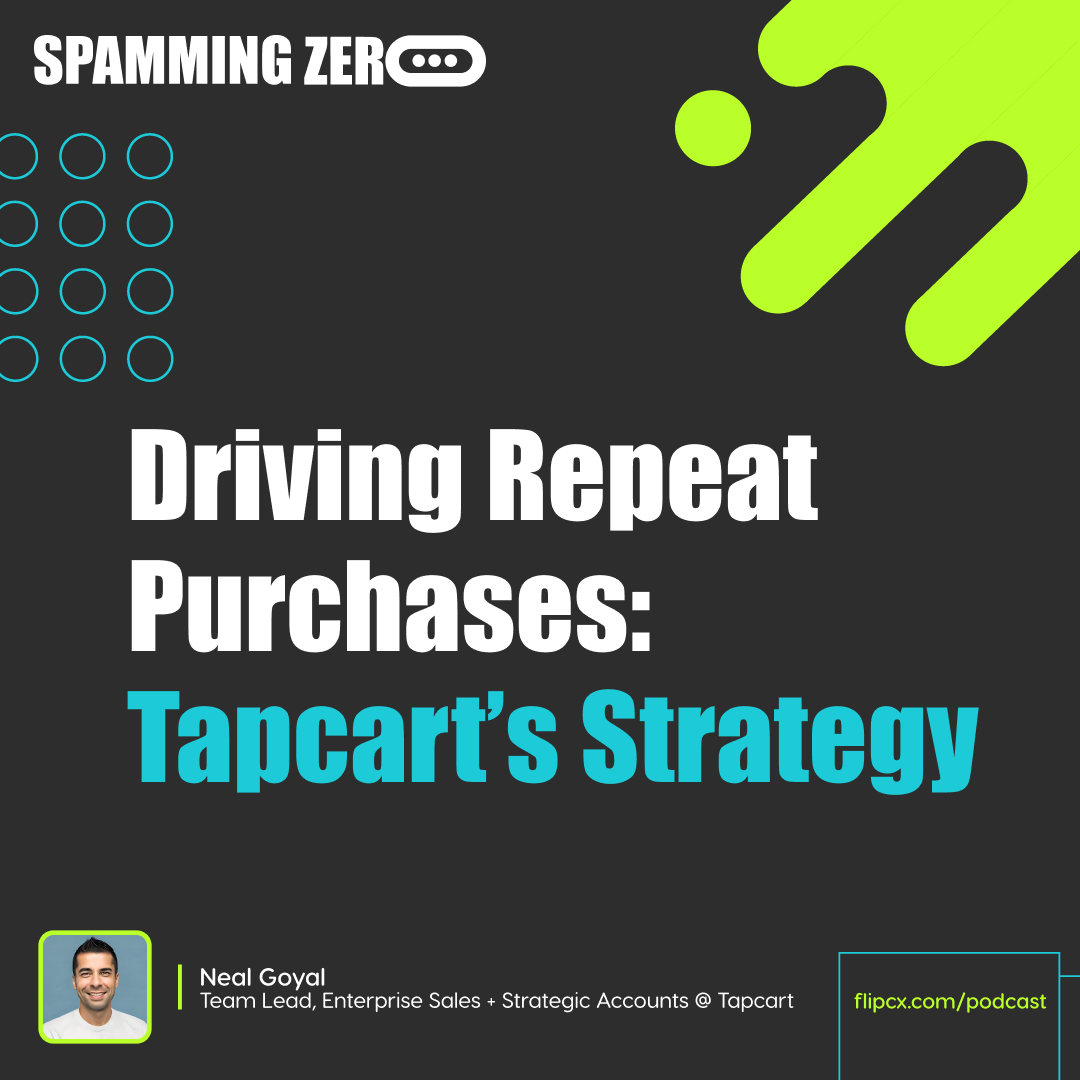Episode 50: That's Hot - Sustainability, Solid CX, & The Future Of Fashion with Yevgeniya (YAY) Yushkova
- 0.5
- 1
- 1.25
- 1.5
- 1.75
- 2
James: Main sponsor of the Spamming Zero podcast is ttec. com. TTEC is a customer experience firm that focuses on several different industries, but one in particular is retail and eCommerce, to all of our listeners out there. Their website again, if you need the phonetic spelling of that, it's tiger, tiger, echo, charlie dot com, TTEC. I love what they have on their About Us page, " The power of big, and the agility of small." They're a big company, but they have the agility to do a lot, just like a small company does. I also love the fact that they're in six continents, 50 languages, employees globally of 69,000, and their client NPS is plus 71. Pretty awesome. A couple of other things about TTEC is they're customer- obsessed, digitally empowered, and outcome- focused. Some of the CX solutions they offer are customer care outsourcing. So if you need a BPO, they can be your partner. Contact center outsourcing, as well as CX solutions and strategy. Reach out to ttec. com. I'm James.
Brian: And I'm Brian.
James: This is Spamming Zero. Welcome to the show, everybody. Welcome to Spamming Zero. I'm excited about this one. I'll tell you why. We've never done this before. But we have a special guest host, one. Number two, we're talking about a topic that I have no business talking about, two. Number three, we have an amazing person that's on the show today. I'm just going to call her Yay Yushkova. However, I'm going to let her announce her real name right now. Yay, welcome to the show.
Yevgenia Yushkova: Thank you. Thank you, James. I'm really happy to be here. My full name is Yevgenia Aleksandrovna Yushkova, or simply, Yay. So it makes it very easy to remember. Really happy to be on the show. Really excited to talk about some really fantastic topics that James has prepared for us. Meanwhile, just a little bit about myself and who am I and why listen to me anyway. I have been in the industry for over 26 years. I was passionate to become a fashion designer ever since I was four, and worked through multiple different ways of manufacturing, mass market, all the way to runway, all the way to helping large retailers build their private labels, multimillion dollar businesses. And today, I am sitting in a chair as a coach as well as a consultant with me and a few of my colleagues from the industry who are part of my team. We are helping startups, small to mid- size companies, to help build their fashion brands, but build them in an unconventional way following Yay method, which is very much process- oriented, very much looking at end- to- end process that drives results, and helping you to get the product from concept all the way through launch. We provide coaching as well as consulting services, so we're really excited to share some of the knowledge here on the call with you guys as well.
James: And then we have the amazing Kristina Keene. Kristina, tell the audience a little bit about you.
Kristina Keene: Well, I head up our content strategy here at Flip, and as I like to say, I do a lot of herding cats, and I'm very good at it. I am a dog and cat mom. And I wear a lot of black, and James likes to make jokes that I'm a witch, which hasn't yet disproven that, so we'll go with it. Witchy vibes are good.
James: Just for the record, I don't do it in a disrespectful way.
Kristina Keene: I know.
James: Just so everyone knows. It's a real joke between Kristina and I. So why are we having Kristina on the show today and hosting today? Because when I say I have no business talking about fashion, I really don't. I usually wear a hat and hoodie most days, and I-
Kristina Keene: But they are color coordinated.
James: Yeah, I match the hat and hoodie, Yay, so I've got that going for me. But most of the time, I think we need to bring the experts in. So what I'm going to do is I'm going to do my best to keep the conversation lively between the two of you. So let's start this show. I want to start by asking you a quick question, Yay. We know that you were passionate about this since you were four years old, okay? If you're passionate about this since you were four years old, there's likely going to be some brands that stand out to you and brands that you think are doing some incredible work today without getting in trouble or anything like that. I'd love for you to talk about some of those brands that stand out today in the fashion world that you feel like are just doing incredible work.
Yevgenia Yushkova: You put me on the spot, James. I like that. So couple of thoughts that I kind of want to talk about in terms of the brands that are doing an incredible work. And I really actually want to talk about more of a private label brands today, because I think there is a presence for that, in addition to more of, let's call it, private brands. Because I think there is retailers, large retailers that have been really influential in our lives, are pivoting towards bringing in more sustainable, more powerful product that it stands for the quality, but under their private label, more generic brand, which they're almost turning a game changer. Because at the beginning, if you remember back when private label kind of... Let's take 10, 15 years back. We were thinking of private label brand would be the cheapest and the worst quality, right? Probably. But it's the cheapest, so we're going for the value. What we care is the value. Today, we've seen some of the retailers who are creating private label brands in today's environment that is actually quality driven. I would say it's even better quality than potentially a compatible brand that they are trying to go against, as well as still delivering product value. So I think those would be an important aspect to highlight and kind of give a big hooray to some of the retailers that are doing a really great job. One of the first I'd probably say, which I know this is going to sound crazy, but I'm going to say that Target is doing a phenomenal job with their private label division. Not only from the quality perspective, they're getting the trends right, they're getting their design models right in terms of being more easy to shop, easy to understand for the consumer and consumer eye, as well as bringing that sustainability factor into their game to be able to build the product that is more earth conscious, which I think it's really important as well. So definitely great work there from that perspective. I'm looking to also kind of hooray more of the brands who are truly creating sustainable product, not only from the aspect of, " Hey, I'm going to use a fabric that is sustainable," or, " I'm going to use less water," as an example, " when we dye our products," but the brands who are also looking from a sustainability factor in terms of their processes and in terms of how they are manufacturing their products. Because I think there is a lot to say in terms of waste. And waste is a big factor here that a lot of times we talk about it, but we don't really do anything about it. And I think the brands who are focusing on figuring out how to do their cutting tickets so there is not going to be a lot of waste of fabric, or figuring out the processes of how to dye their products using less energy and using less water and producing less contaminants, I think those are brands that we definitely want to give a big hooray towards.
James: I'm not going to lie, now I'm going to have a much harder time if my wife listens to this podcast, preventing her from going to Target.
Yevgenia Yushkova: I know, right? I mean-
Kristina Keene: They're doing a really good job.
Yevgenia Yushkova: They're doing a really good job, really. Out of big retailers, I mean, phenomenal. They're crushing it.
Kristina Keene: Yeah. I want to touch a little bit on the sustainability note. When you said that, immediately what came to mind for me was Reformation. So Reformation uses all dead stock fabrics, and every quarter, I get a sustainability report from them about what my shopping has done to save the environment. It's a very powerful thing, buying a dress, and it's even more powerful when you know you're saving gallons of water and doing something good for the planet. Although, then I think about shipping and I'm like, " Is it really that great?" But I'm thinking, " What other brands out there are doing similar things?"
Yevgenia Yushkova: Well, and I think, James, kind of looking at... The reason I'm thinking of it, because you just mentioned the hoodies and T- shirts and sweatshirts. Another great brand, it's upcoming brand, Lane Seven, as an example. They are not only provide and do direct- to- consumer sales, but they also are a supplier for a lot of blank garments to a lot of finishingers here in the United States. They've done a tremendously amazing job as well, and I want to give them a big shout out for really looking at how to create their product... Again, not only just from sustainable fabrics, but really optimizing how much the water consumption is, how much they are spending energy- wise in their warehouses and as well as in their dye houses. So I mean, how much they are to minimize the waste in terms of the contaminated water. I mean, they've done a really great job. We've worked with them quite a lot and I've tested their product among most of the distributor or blanks providers that are existing in the United States, and by far, not only are they winning quality- wise, they are truly winning the sustainable story as well.
James: So question for both of you. What sparked your passion? What was the moment that sparked your passion for fashion?
Kristina Keene: Okay, so what started it for me, my mother has said before that when I was in the womb, and this is definitely TMI, so I apologize, but when I was in utero, if I didn't like her outfit, I would kick her more. So from birth, I was on the fashion train. But I remember as a little girl, sitting on my mother's bedroom floor and pouring over her Vogue Magazine issues. That started me on the path of cutting up my Barbie dresses to make new garments, and then my mother would take me shopping with her and I'd pick out outfits so that I wouldn't kick her anymore. And I ended up being the little fashion consultant for my aunts and my grandmothers, and it's just sort of been an ever present thing in my life. And now I wear pretty much head to toe black every day, but I am very much a shoe girl and I have far too many pairs of shoes. But they're all very high quality, so I wear them season after season, and I love them.
James: Yay, why don't you go next?
Yevgenia Yushkova: Perfect, thank you. Well, my passion, as I mentioned, for fashion's been since I was four. I actually have no idea where it came from. The only logical explanation I could give, it's because back in the days, there was a movie series was called Simple Maria, and it was all about... Soap opera type of a thing. It was all about fashion and how she was sewing and doing all of those things. That is the only thing I can think of why did I decide at four years old I'm going to be a fashion designer. But I think what really drove me to become more passionate about it, and I knew that there's nothing else in the life I will be except fashion design and be in the fashion industry, and I think what really prompted me is the ability to create, an ability to recreate things from old clothes that when we were growing up, we were not as able to go and buy and start shopping. So a lot of times, most of my clothes was hand- downs from my brother or my mom's old skirts and jackets and things like that. So the only way for me to stay updated and current is to actually create new outfits out of that clothes. So I learned how to sew and create patterns fairly young, so that I could truly stand out and be an individual of my own even within a gray crowd. At that time, we were still back in... We were wearing uniforms. So I wanted to make sure that I do stand out. So that was my way to be shining as an individual and show the individuality through my outfits that I've created. So just ever since, just been ongoing thing, and I don't stop.
Kristina Keene: That's incredible. What struck me there is that you've talked so much so far about sustainability, and it sounds like from the get- go, you've been on the sustainability track. I did a little internet sleuthing about, as a good co- host should, and I saw that you are a designer yourself and you have a line of garments that can be worn multiple different ways. So instead of buying one garment that you can wear one way and there's only so far that that garment can go for you, you've flipped that on its head and you've got one garment that can be worn in countless ways. It's so brilliant. So I'd love to know where did you get that idea to turn one garment into many?
Yevgenia Yushkova: That's a wonderful question. As many of the things that come to me as ideas, that idea came to me in one of my dreams. And I do tend to come up with things while I sleep, but one of the things important... The best solutions come, by the way, when you are sleeping. But what solidified my idea was that I was in the urge of wanting to come up with what am I going to do as my own brand, because I always knew I wanted to have my own brand, and trying to figure out what would be my unique selling value proposition to the customers and what kind of value can I bring. At that time, I used to drive a convertible Mini Cooper, and so one time, I was standing on an intersection, turning, and then I got just... I don't know, something just... I think it was rain started to drizzle or something and I had to close my top. So as I was closing it, that was my big aha moment, which after that, I called my husband immediately and I said, " We're going to create a convertible clothing line." And he was like, "What does that mean?" The point was that I thought about it, if we can convert our cars, as an example, to have them be a multipurpose for us, why can't we do something for us, especially women, who is constantly on the go? And I'm a big traveler, and so I also believe that schlepping a huge suitcase of clothes is definitely not an option. But I also don't want to compromise the style, because I mean, God forbid I'm going to be seen in the same thing in the picture twice.
Kristina Keene: Exactly.
Yevgenia Yushkova: I mean, that's not going to work. So the idea was how can we create a product that will allow a woman to try to keep her individuality and style, but yet not buying so much of wardrobe that then she'll have to pack or have. That kind of puts me back into sustainability factor, right, as we constantly keep thinking about, " Well, why sustainability? Why did I even start kind of thinking sustainability even from the young age?" Well, I think it was because we did not have the other options. We did not have the plethora of things, right, of items that, A, we could buy, or not because we couldn't afford them, they were just not available. I mean, I grew up in former USSR, so there was no such a thing. So everybody wore the same type of dresses and you probably had one of each and that was the end. You had one wooden toy and that would be the end of it. But it keeps the creativity going because of that. I think that is the biggest pain point, I think, in today's environment when we are constantly putting pressure on brands, which we should, and companies to become more sustainable. What we are not doing that I want to emphasize on this call for all of us listeners, because we all are consumers, is that we are not putting pressure on ourselves to upbring the next generation in the way that we were brought up back in the days. Meaning with less stuff and with ability to value the items that you do have because not only they have pressures because once you buy it, there is not going to be a chance to buy 28 others of the same alike, but at the same time because it's quality. So I think that's kind of where we as a society starting to miss, because we're not putting that emphasis. I don't see that... I have young kids and they go to school here in America, and we don't have that. And even though at home I have that and I'm engraving it, we're not, unfortunately, engraving that in our school systems. And everywhere they get praised with little gifts. And what is this kids are going to grow up, as thinking continuously that they need more stuff to feel satisfied? And then if that's going to continue, which we've already seen that it's continuing that from Gen Zs and kind of younger generations, we're never going to get on that sustainable, zero waste or low waste, because we still want to consume and constantly consume.
Kristina Keene: Right, right.
James: I have a little bit of a off the wall question that I feel like is relevant. Correct me if I'm wrong if it's not, but I feel like it is, because I have kids too and I go shopping with them, especially my daughter. My daughter has a fashion of her own, and I don't understand it, but it's fine. She gets to pick. So I am genuinely curious when I go shopping with her and she picks out an outfit or she picks out whatever she really likes. I am seeing a trend that's happening of things that I remember seeing in the'80s and '90s, they're coming back. Why is that? Why does fashion go through these phases of, " All right..." Because actually, if you remember back in the day in the 2000s and even the'90s, things that were popular way back became popular again, and it goes through these cycles of popular and then it goes through this big drought of unpopularity and then it comes back and then it's popular again. Why does fashion do that?
Yevgenia Yushkova: That's a phenomenal question. I always ask that question myself as well. But here, I have a couple theories. Theory number one, I don't think that this circularity happens not only with just fashion, but it happens with everybody. History tend to repeat itself. So I think that has to do with just how we are learning from the examples of previous generations and try to pivot and make them slightly different and better and bring them as the new ideas. Someone once told me a really good new idea, it's old forgotten idea. So just bring it back, pivot slightly, make it a little different, and it'll be brand new. So I think there's a circularity aspect of that. I think it's probably why it's keep coming back. As well as I think in terms of specifically pertaining to fashion, it's the trend, right? Why does the trend constantly circulates? It's almost every decade it will give it its own turnaround. So kind of like a wheel. And I think it has to do with, again, the fact of trying to... When the designers are looking for inspirations, they're not only looking for inspirations from other designers or nature or everywhere else, but they also look for inspirations from the history, from back in the days. And when they do that, again, it's taking those classic, old elements and then bringing them in into something new and upcoming trends. So we kind of see the traces. It's not necessarily the same'90s as it was really in the'90s. I feel like the'90s that really did not work, they stayed in'90s, and then the classic'90s are coming back with a new spin. Same thing for our'60s or'80s. We can say the same thing for even'20s, right? There was recently... I mean, there was even a 1950s trend when we were seeing things were again coming back, but it's the classics things that were coming back and timeless. So this is why I think it's important to kind of going back to the sustainability factor is when we design things that are timeless and you keep them long enough, they tend to be relevant, at least away from the decade, they'll definitely be very relevant.
James: So what's your advice to eCommerce brands that want to stay timeless? What should they be looking out for and what tips would you give them today?
Yevgenia Yushkova: So today when we are even working with eCommerce brands who are newer and upcoming, one of their three things that we talk about is lean design model. Lean design model meaning don't try to be good at everything or bring in a plethora of assortment. Focus on what specifically your target audience needs or how you're solving a problem for them so that they can truly believe in your product. And in terms of creating the quality product to make sure that that product always fits, it has the great fit. So emphasize on quality and fit. But in addition to when it comes to styling, think more about essentials, right? Because that's what... When we say something timeless, it's truly something that is essential to have. And yes, as an icing on a cake, you can have this fashion- forward trend pieces, but your core base business really most of the times needs to be around what that essential timeless collection or product assortment would be, particularly for your customer. Hence where the 80-20 rule comes in, right, is applying to... Especially if you do have a sales data that you have generate over years, is to truly analyze it and make the decisions of your assortment and assortment expansions or contractions based on data of what the customer is going to tell you. Because based on sales data, you can learn that probably 20% of your current assortments or past assortments will always drives 80% of your sales. It will be the essential assortment for your specific customer.
James: Love that.
Kristina Keene: From what you just said, it sounds like fashion almost... I mean, in my mind, it's almost more than any other industry where it has to be so customer- focused, because it doesn't make sense to produce what your customers won't buy. I want to talk a little bit about... I've read stories about how some brands, when they have produced things that customers just don't buy, that it creates just a phenomenal amount of waste in the world. I want to get your thoughts on how brands can want to avoid it, but what they can do with that excess stock that they may not be thinking of.
Yevgenia Yushkova: Great question. Absolutely great question. I think one of the first probably the solutions for the brands, or retailers, for that matter, is to make better data- driven inventory planning solutions. And of course, every brand uses data, sales data to make those decisions and bring in product and stock. But when we are looking at the data, I think there's multiple ways of looking at it. One is more of a straightforward, " Hey, my customer buys this particular product, so I'm going to bring more of that product." But also looking at potentially where... What we like to do with our clients is to take a look at it more in the details of what fabrics our clients are gravitating towards our assortment, what embellishments or what type of prints, as an example, they are gravitating towards. So that when we are building the next upcoming assortments, we minimize the risk of this dead stock because we are trying to create programs around those fabrics or around those prints or around those finishings and trims or whatever else, so that when we build those programs, we know that the customer already told us we love this, we love this product, we love this product because of this particular materials or of this particular way that we create this product. So as we create and expand that line assortment from those materials, we have less materials that we are potentially going to waste, because now we have more styles to put in into this one material, as an example. And at the same time, we are minimizing the risk of the customer not wanting to buy it, because we already know they like it. So thinking more on those terms when we are doing kind of product assortment creation and planning. And of course, the inventory planning needs to truly... I can't stress more enough that each retailer and a brand needs to have a data scientist on their team. A data scientist who could truly help to analyze data on a granular level to make better decisions of how to plan their inventory. Another great option that we always recommend, especially for startup brands, is to look at opportunity to be on demand. On demand gives you that low waste option until you know that the customer will want to buy this product and they're buying it. Then yes, go ahead and invest in bulk inventory so that we can bring in... But we bring enough, knowing that it's going to sell. To your point, we minimize the waste. Because otherwise, to your point, when you have a lot of dead stock, it's not only terrible for businesses because it's a dead cash, right?
Kristina Keene: Right.
Yevgenia Yushkova: There's no cash flow if you are sitting on this inventory. I always say the inventory is the death of any business. So with that in mind, to your point, what happens with this dead stock after it's no longer relevant and what do we do with it. So couple of... I like to always push the boundaries and think outside of the box. So of course a lot of times people, what brands would do is they're going to go to liquidators, and the liquidators will go to third world countries or they will try to sell them at really cheap discounts somewhere else so that they can be able to get through that product. Which is a great strategy and one way of doing it. But if we want to think about is there a way to push that envelope a little bit better or a little bit more is can you take that dead stock and recreate another style out of it. There is couple of ways of doing it. When we were working with a sports licensing retailer, they had a lot of dead stock of hoodies. So what we end up doing is we took the old hoodies that no one ever wanted to bring and wear anymore, we cropped them and we cut them up and done all of this fun stuff that college students are doing today, and all of a sudden, we were able to sell through all of it because now people will... They want it. And to your point, bringing the customer experience, this is where I think there is an opportunity for retailers, especially our brands, to involve their customer to do something as a DIY project or potentially having a webinar where they can get some of this old stock ahead of time and then you will teach them how to create a new outfit out of this themselves. I mean, this is a fun way. Now pushing the envelope, how can now we create this unique customer experience, and the customer now says, " Hey, not only I'm buying this cool clothes from this, these people are... Brands is also teaching me how to repurpose this clothes, and potentially here's how I'm going to do it." So I think there's there... And again, this is just hypothetical creative ideas, but constantly thinking of how can we push that envelope to bring a more exciting experience to the customer, and as well as minimize the ways that we are dealing with.
Kristina Keene: I love that idea. I absolutely love that idea. It honestly makes me think about... I think about a company like Coach, who if you have outgrown a bag or it has fallen apart, you can send it back to them, they will fix it up, and they will put it on their site as a reworked vintage item. And I love the idea of having an event where you say, " Hey, if you bought this item, here's how you can rework it to suit the trends today." I think that's a brilliant idea. What else would you say to... I mean, especially a startup brand where they're thinking about these things and maybe on demand isn't an option for them, would you encourage them to start thinking about things like events or, " Hey, send us your old items," from the get- go, or would you have them wait a while?
Yevgenia Yushkova: It depends. It will depends on their process and what is in their capabilities. Because a lot of times when we are talking to small startup brands, they're potentially starting somewhere out of the garage, right, trying to create a product. So an ability of taking back inventory potentially might not be an option for them at start. However, I think there should be an opportunity where they build that into their plan and figuring out at what point of their business they'll be able to introduce a similar program or some sort of other program that would work for their customer and for their brand. However, I think in terms of, to your point, how can a startup can also still think about lean is brings up a good point in my mind is making sure when you start a business, you follow a roadmap of consecutive steps before you jumping into ordering inventory. So what I'm seeing really often with all of our coaching clients, and this is usually the first thing that they say to us, " Yay, where have you been? Why didn't I know you when I started?" The reason is because we as fashion entrepreneurs, and I was one myself, 2011, even though I had 15 years of experience under my belt, I still made the same mistakes, because I went after the things that I know and they're fun to do, which is design product, create product, place an order, create a website, and say I've launched, and woo-hoo, I'm going to have sales. Well, unfortunately, that doesn't work. And learning the pain points of importance of taking the steps of planning, budgeting, creating five year projections, strategizing your sales strategy, marketing strategy. So before you even in thinking of investing in inventory, in setting all of your channels in the way where when you are bringing that inventory, you do making sure that it is going to sell. I think those is going to be taking the important, non- sexy, not fun steps ahead of the fun stuff is what is going to help a lot of the startups to minimize waste in the inventory that they potentially will bring that will not sell, and truly understand your customer. I think we as entrepreneurs in fashion industry specifically, we do not spend enough time in planning. We spend way too much time in executing. So instead of actually trying to figure out the plan first and testing out the bits and pieces with the consumers, focus groups, surveys to knowing that when we do make that investment in our inventory, we are for sure going to sell it.
James: I have a quick question for you. When we think about what brands are doing today to provide a better and more memorable shopping experience, outside of like, " Here's a product that we recommend for you based on your previous history," what are some innovative things that brands can do today to provide a more personal experience with their shopping?
Yevgenia Yushkova: I love that. A couple of examples, and I'd love to really start off with the example that we have implemented for one of the largest collegiate retailer, as an example, and we've created something that's called Shirt Bar. We thought that that was an incredible concept, which was proven that it actually worked really well, where we had to bring in a unique customer experience into the bookstores. Now, we all know today, bookstores in college campuses are dying out in the sense that no one really needs to go and buy books at college campuses anymore, right? You can buy everything online and a lot of even the courses are going into online kind of book opportunities, materials. So what happens with those stores today? So thinking about how can we reinnovate the experience of the customer having a reason to go into the stores and buy. What we've created, something as a shirt bar where a customer could come in, pick up their favorite sweatshirt or T- shirt off the appropriate assortment that we have slated, and then they can walk up to a shirt bar and pick out of the menu of 50 different items in terms of whether it's a department, whether it's a team, whether it's a mascot, and they can customize it right there while they're standing in the store, their sweatshirt, with the name drop or a mascot or both, or whichever way. There's different placements. It not only created a cool experience, because they truly walk up to a shirt bar that truly looks like a bar, but instead of buying a drink, they're buying a shirt. And giving them the fact that they're now becoming designers themselves. It's the liberation of, " Hey, I created something unique," right? So talking about individuality. And be able to truly serve their needs. Because one of the biggest needs that we have discovered with that retailer is that the biggest pain point of the customer is that there is a lot of departments and sports were underserved in terms of merchandise. Because as a bookstore that has a limited capacity of real estate, they can't bring 50 different sports or 50 different departments. Maybe a T- shirt or two, but not everything else. So giving them an option to customize, not only were we able to give them a great experience, we were also working on minimizing waste, because now we no longer have to have all these hoodies and all these T- shirts and 50 different sports. We just have to take one and then we just have the name drops appliques, which are also sustainable and were also created out of sustainable materials, that we can truly apply them right there on demand and on the go. I love to share that story because I think that was a hands- on experience of truly working with Scott Killian, whose idea that was initially, and really build this shirt bar experience together. I thought that was really wonderful.
Kristina Keene: That's really cool.
James: That's the first time I've ever heard anything like that.
Kristina Keene: Yeah, well, and it makes it less disposable for the buyer too.
Yevgenia Yushkova: Absolutely.
Kristina Keene: If I'm a kid in college and I have designed my own sweatshirt for the school of English because I was an English major, I would be a whole lot more likely to hang on to that post- college.
Yevgenia Yushkova: A hundred percent, a hundred... Because now it becomes personal, right? Now we've connected the product on the personal level to the consumer.
Kristina Keene: Right. It's an emotional component.
James: Really love that example. We're going to do something a little different just for a second, okay? Because we're getting close to time. But I normally would weave in some fun little engaging questions where people can get... But you've been just dropping amazing insights here, so I just want to keep going. One of the things that I think a lot of brands struggle with or they test this out but they might fail, and that's using an influencer to amplify their products and their brands. One brand that comes to mind that does the opposite of this, they use a scarcity tactic that we're all very familiar with here at Flip, and that's Aviator Nation, where they do scarcity drops. But they also have... Their primary buyers are these big celebrities in Hollywood. It became such a big thing that it was this massive trend on TikTok and Instagram to where now it feels like the entire state of California is always trying to find these new product drops that Aviator Nation does. I'm curious what your take is on it. What is your take on the idea of the influencer marketing piece to this? Because you did say you've got to think through that piece before you start thinking about product. This is a lot of times where a lot of people play in the fashion world, from what I understand, is there. So what's your take on what you would tell brands if they're exploring influencer marketing?
Yevgenia Yushkova: I would really start off making sure that it is truly been tested as part of your marketing strategy, and that not every brand will benefit or ROI from influencer marketing. So as much as we really want to see the conversion from influencer marketing being sky high, it does not work for everybody and it does not convert as high as we think. So I think it's an important opportunity to truly think through whether this is a strategy that's right for your brand. And if it is, because in some cases it is, depending on who your customer is and what your customer gravitates towards and where they're getting inspiration or shopping ideas from. And if that is the case, then I think definitely looking at and making sure that the influencers that you find or you are approaching to collaborate with are truly speaking to your customers and being sure that they're on target with that. Because I think a lot of times where I think it fails is because we go in and we're just going to create this avatar of potential influencers that we want to get, but the avatar is usually so broad because we are trying to get the micro influencers, because it's just more economical and especially for the smallest startup brands is what they can afford. And then it becomes a mixed confusing message to the customer, because the customer is very smart today too. They understand that if I pay, as a brand, $ 10,000, I can get all these influencers to try out my product and say, hey, how cool it is, but is it real. Customers today is truly looking for authenticity. So I think it's important that if you are going with influencer marketing, that, A, you are aligned with the right influencers that truly has the trust and from the consumer that you are actually trying to target, and that the marketing of it has to be as genuine as possible. I think that's when you truly can win in this particular strategy.
James: I think I read a stat one time that said... And I don't even know if this is true or not, but hold on. Hopefully it is. But I think I read somewhere that if some of the big influencers that are out there, so not the micro influencers, that if they had 10 products, they would actually only try about two of them. Which means like 80% of what you see from big influencers is absolutely garbage.
Yevgenia Yushkova: Well, I mean, look, it's a job, right? So they're getting paid for it and it's rightfully so. Same way as anybody else would hire somebody else to do any kind of work for them. So I think that's why it's really truly important that I think if you're really trying to build that trust and momentum with your customer is to find those influencers that are truly going to validate your product because they also believe in it.
James: So listen, we are at time. Yay, you've been amazing. I'm definitely going to be hitting you up to... Because I want you to come on again because this was so good.
Yevgenia Yushkova: Look forward to it.
James: Yeah, so we're going to have to do this again for sure. This time maybe I won't even show up. I'll just have Kristina do her thing. Kristina, you were great too. Thank you so much for joining us today, Yay. And if the audience wants to learn more about you or hit you up for a consulting, where can they do that?
Yevgenia Yushkova: We do have... Of course, we have a website, yushkovadesign. com. I've been talking a lot today. And we'll have a link with James so that you'll be able to find us. However, I also very present on LinkedIn. So I tend to do, through our company page, write a lot of articles, as well as give away free tips to our fellow community, so that the brands and the retailers can also hopefully benefit from the knowledge that we have to share. As well as twice a month, we host a executive round table. It's a network event that this is my way of giving back to a fashion community where we invite executive startups, anybody who is in the fashion industry and who is trying to create a brand, already created a brand, or we also have executives coming in from well known brands who share their challenges as well as their wins so that we can celebrate the wins and learn from one another of what they've done right, and we could all participate in collaborative discussion of how we can solve some of those challenges so that we can, again, learn from one another. I'm a big believer that sharing the expertise so that we can build a community and really upbringing the next generation within fashion industry.
James: So where do they learn more about that executive round table stuff? Because I mean, I think that's massive value that you just provided. Where can they learn more about that?
Yevgenia Yushkova: We do have those postings on our company LinkedIn page so that we could be able to... James, I'm going to send you a link to that as well so that when we do host them, people can sign up and join us on those round tables.
Kristina Keene: That's great.
James: Awesome.
Kristina Keene: James, can we finish with kind of a silly question?
James: Absolutely.
Kristina Keene: All right, I-
James: I love silly questions.
Kristina Keene: I know you do. So I've got a little ad lib for us. I'm sure you're familiar with the Meat Loaf song, I Would Do Anything for Love( But I Won't Do That). Let's replace the word" love" with" fashion." So I would do anything for fashion, but I won't do blank. For me, just to kick us off, I would never bleach my eyebrows. I would never do that for fashion. I know that that was a big thing, oh gosh, I want to say last summer, but I would never bleach my eyebrows.
Yevgenia Yushkova: Okay. Wow, that's a good one. I would do anything for fashion, but I think I would never be ordinary.
Kristina Keene: I love that.
James: I like that. I'm all about that. Kristina knows this. I talk about unconventional stuff all the time. So when you had mentioned that when we very first started the podcast, I was like, " This is going to be good."
Yevgenia Yushkova: I think we all have to shine our individuality.
James: I mean, it's what makes the world a better place.
Yevgenia Yushkova: Yeah, absolutely.
James: Yay, you've been awesome. Thank you so much for joining us. If you have not yet subscribed to the podcast, please do so. Give us a star rating and let us know what you want to hear or who you want to hear from on the show next time. See you next week.
Yevgenia Yushkova: Thank you.
DESCRIPTION
It’s our 50th episode of Spamming Zero, so we figured we'd make a statement - a fashion statement, that is ;)
Thrilled to have Yevgeniya (YAY) Yushkova, Founder of Yushkova Design Inc. and guest-host Kristina Keene on to talk top tips for fashion brands, sustainability, longevity, and so much more. This week, on Spamming Zero.
What’s Covered?
- A bit about YAY’s background
- Fashion brands that are doing phenomenal work today
- The importance of sustainability (and who is nailing this)
- The inspiration behind some of YAY’s collections
- Top tips for E-Commerce brands who want to be timeless
- Channeling creativity into your CX
- Providing a more personal touch to the shopping experience
- YAY’s thoughts on influencer marketing
- And more
Ready for more fantastic Spamming Zero conversations ahead? Listen, rate, and subscribe on YouTube, Casted, Apple Podcast, or Google podcasts.
Today's Host
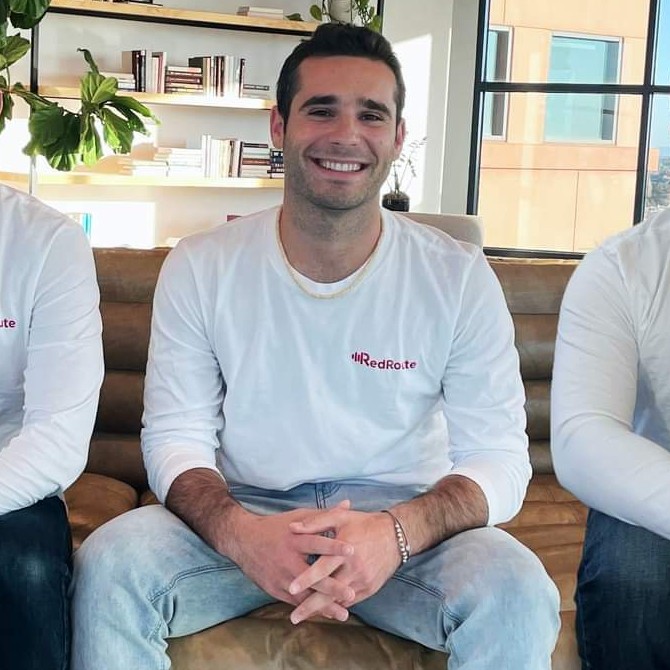
Brian Schiff
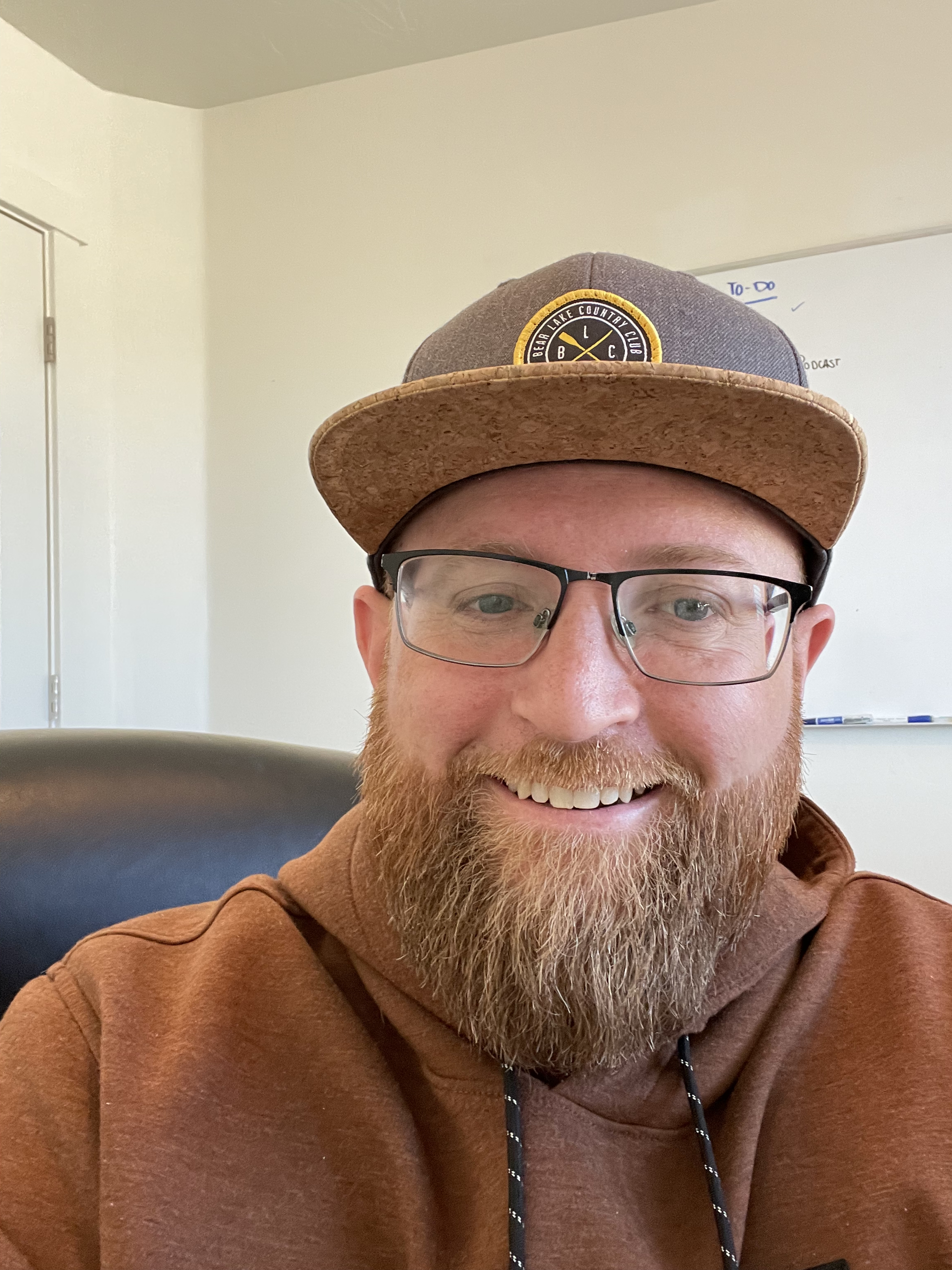
James Gilbert
Today's Guests
